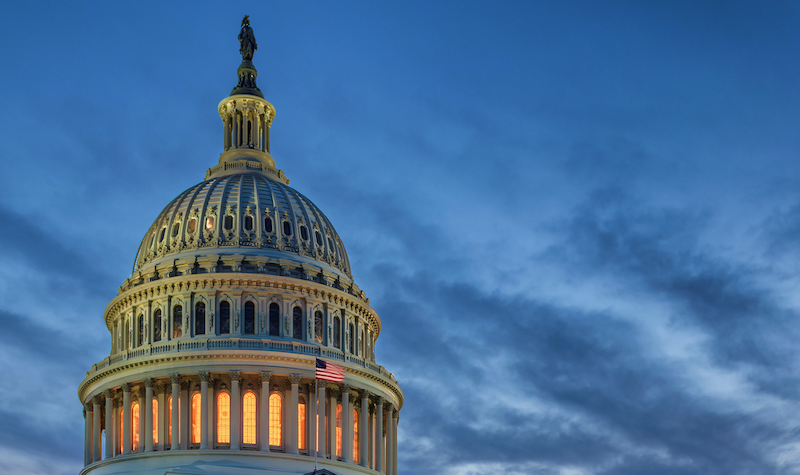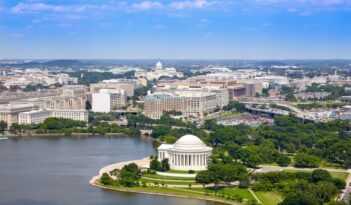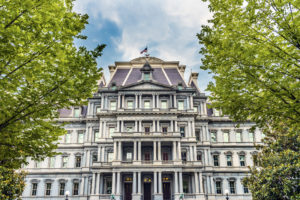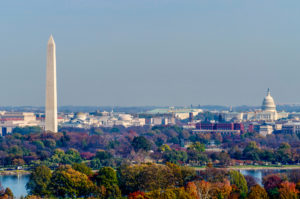
Deep state conspiracies threaten science and degrade public trust in government amid the COVID-19 pandemic.
“I’m not convinced it’s real. I think it’s nothing more than the flu. If I die from the virus, it was just meant to be,” Thomas Seale, an attendee at the Sturgis Motorcycle rally, reportedly said of COVID-19.
An estimated 460,000 people who love motorcycle culture and the company of like-minded people attended the huge rally in Sturgis, South Dakota, population 7,000, for 10 days in August 2020. They rode around, had races, attended bike shows and concerts, and drank beer. Face masks were rare.
People told New York Times reporter Mark Walker about the core importance of the event: they met their spouses at earlier rallies, referred to their fellow participants as family, or had attended the rally for decades. When asked about the pandemic, the attendees explained they were not concerned enough to stay away or wear a mask, either because they did not believe that the virus was serious or they thought that if they got the disease, that outcome was intended.
A recent Institute of Labor Economics study found that the Sturgis “super spreader” event could be linked to 260,000 coronavirus cases in the United States and could create up to $12.2 billion in public health costs. These calculations were based on anonymized cell phone data that tracked the origin of the attendees, data from the Centers for Disease Control and Prevention (CDC) on disease incidence around Sturgis and in origin counties, and a “synthetic control” approach to validate the statistics. The $12.2 billion cost estimate comes from a second study by Thomas Kniesner and Ryan Sullivan that priced the statistical cost of a COVID-19 case at $46,000, a number that omits whatever fatalities may have occurred. As a result, this estimate is conservative.
Unless the governor of South Dakota had called up the National Guard, a risky choice both politically and with respect to avoiding violence, no organized force of government could have stopped the event. The belief among attendees that masks and other precautions were unnecessary is disturbing and suggests that the nation is already suffering from a second different, but related, outbreak: widespread faith in conspiracy theories and deep skepticism of science.
Political scientists Joseph Uscinski and Adam Enders organized a poll in March 2020 that presented about 2,000 Americans with 22 popular conspiracy theories, including a few about the COVID-19 pandemic. Thirty-one percent of these Americans believed that the coronavirus was created and spread intentionally, and 29 percent believed that President Donald J. Trump’s opponents exaggerated the virus’s threats to harm his chances of reelection. The video “Plandemic,” which advanced these theories, was viewed an estimated 8 million times on social media until YouTube removed it.
Conspiracy theories are nothing new, and some turn out to be true. But political scientists Russell Muirhead and Nancy Rosenblum argue that the conspiracy theories formed in the Trump era are fundamentally different from theories embraced by Americans in the past. Today, many conspiracists, including President Trump, promote claims that are devoid of any systemic explanation and instead take the form of mere assertion and innuendo. The theories are repeated in an echo chamber filled with potential believers and often begin with the prelude “a lot of people are saying that…” as opposed to specific claims about particular groups and their actions.
A prime example of new conspiracism is the claim that the “deep state,” by which conspiracists mean the civil service that includes about 2.1 million employees, is united in a conspiracy to sabotage the President. This allegation, repeated over and over by President Trump, his aides, political allies, right-wing media commentators, and grassroots supporters, does not explain the motivations of the civil service, nor does it identify what civil servants hope to accomplish. What should be done about the deep state is unclear. Should it be replaced? With what? Instead, the contemplation of the deep state’s reach simply drives believers into a lather of anger and disappointment.
Among the most powerful conspiracists is radio host Rush Limbaugh, recipient of the Presidential Medal of Freedom, who told his millions of listeners in February 2020 that the coronavirus was being “weaponized as yet another element to bring down Donald Trump … The coronavirus is the common cold, folks.” A month later, he went further: “And the American people did not elect a bunch of health experts we don’t know … And how do we know they’re even health experts? Well, they wear white lab coats, and they’ve been in the job for a while and they’re at the CDC and they’re at the National Institutes of Health.”
The deep state of Trump-fostered nightmares includes scientists inside and outside government. It includes the public health experts at elite institutions who warn Americans about surges of the virus if the public does not refrain from congregating in large groups, fail to mask up when out in crowded public places, and ignore quarantine guidance. And when it came time for these conspiratorial scientists to do their jobs and suppress a deadly pandemic, they failed. Was this failure because they were too busy conspiring? Was it because they were hacks masquerading as doctors?
Or is this failed response because the President contradicts these experts in public constantly, leading many millions of people to the conviction that the pandemic itself is a hoax?
Such paranoid ravings have taken a serious toll. For weeks, Anthony Fauci, one of those white-lab-coat-wearing experts has had constant security after receiving numerous death threats. He recently expressed concern for the safety of his two adult daughters.
Alarmed by the attacks on the CDC in particular, four of its former directors published a Washington Post op-ed, writing: “The four of us led the CDC over a period of more than 15 years, spanning Republican and Democratic administrations alike. We cannot recall over our collective tenure a single time when political pressure led to a change in the interpretation of scientific evidence.” As tempting as it is to imagine organizing a dinner for the four with climate change experts such as James Hansen and Michael Mann, who could tell them some things about political interference with science, the challenge before us is to restore the credibility of science to safeguard public health, protect the environment, and ensure worker and consumer safety.
No matter when President Trump walks out the door, his Administration has caused irreparable injury. Civil servants are demoralized. The civil service does not look like a promising career path for young scientists or other professionals who interpret, translate into policy, or defend scientists’ work. Unless leaders in politics, science, economics, law, and other relevant professions declare a cease fire, the damage could be with us for more than a generation.
President Obama was right when he suggested that the fever must break before the government gets back on track. He might as well have said, though, that no one knows how to go about breaking it. Hopefully if people realize what is at stake in the war on science, they will join the effort to restore science-based expertise.
Presidents since Ronald Reagan have endorsed the assumption that government is too big and too intrusive. Yet the figurative poster children targeted by these chill words have been public health agencies heavily dependent on science-based decision-making as opposed to—as just one example—the U.S. Department of Homeland Security. No President has spent any concerted amount of time explaining how protective public health interventions, including regulation, make life better. No President has praised the civil servants who weather seemingly endless—and enervating—disputes over science and law that make it possible to deliver those protections.
For the sake of the civil service and its broken morale, and for the American people, who are exhausted and rendered hopeless by the indiscriminate attacks on the government’s competence to keep the population safe, the next President should use his bully pulpit to advance a positive narrative about government’s accomplishments.




